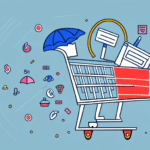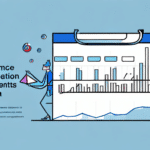Maximizing 2-Week Retention: Strategies for Long-Term Engagement
In today's competitive market, user engagement is a pivotal factor in determining a business's success. The longer users remain engaged with a product or service, the higher the chances of converting them into paying customers and fostering loyalty. One critical metric to monitor is the 2-week retention rate. This article delves into the significance of 2-week retention, explores the psychology behind user engagement, and presents strategies to enhance long-term user commitment.
Importance of 2-Week Retention for Business Success
The initial weeks after a user adopts a product or service are crucial. Studies have shown that a significant percentage of users drop off within the first two weeks if they don't perceive immediate value. For instance, according to a Statista report, the average app retention rate after 14 days hovers around 20-30%, indicating a substantial room for improvement.
Focusing on 2-week retention allows businesses to:
- Assess Onboarding Effectiveness: Identifies if the onboarding process successfully engages users.
- Prioritize Development Efforts: Pinpoints which features retain users and which lead to churn.
- Predict Long-Term Retention: Early retention rates are strong indicators of future user loyalty.
By optimizing for 2-week retention, businesses can make informed decisions that promote sustained user engagement and growth.
Understanding the Psychology of User Engagement
User engagement is driven by two fundamental factors: motivation and ability. Users are more inclined to engage with a product if they are motivated by its value proposition and if the product is easy to use.
Building Motivation
Motivation stems from the perceived benefits users gain from the product. Ensuring that the value proposition is clear and compelling can significantly enhance user motivation. For example, a productivity app that clearly demonstrates time-saving features can motivate users to continue using it.
Enhancing Ability
Ability refers to the user's capacity to utilize the product effectively. A user-friendly interface, intuitive design, and minimal learning curve are essential. Research from the Nielsen Norman Group emphasizes that improved usability directly correlates with higher user satisfaction and retention.
Fostering Loyalty and Investment
To cultivate loyalty, users must feel a sense of investment and belonging. Personalization plays a critical role here, making users feel valued and understood.
Optimizing Onboarding and User Experience Design
Establishing a Strong First Impression
The onboarding process sets the tone for user engagement. A study by Forrester indicates that effective onboarding can increase user retention by up to 50%. Key strategies include:
- Clear Value Proposition: Highlight the benefits users will gain immediately.
- Simplified Onboarding Steps: Avoid overwhelming users with excessive information.
- Personalized Welcome Messages: Use the user's name and tailor communications to their preferences.
Designing an Intuitive User Experience
A seamless user experience is paramount for retention. Key considerations include:
- Ease of Navigation: Ensure users can effortlessly find features and content.
- Accessibility: Incorporate features like alternative text for images and keyboard navigation to cater to all users.
- Regular Feedback Collection: Utilize surveys and user testing to identify and address pain points.
By prioritizing user experience, businesses can reduce friction and enhance user satisfaction, leading to higher retention rates.
Personalization and Community Building
Personalizing the User Experience
Personalization involves tailoring the product or service to individual user preferences and behaviors. This can be achieved through:
- Customized Recommendations: Suggest content or features based on user activity.
- Personalized Messaging: Send targeted messages that resonate with the user's interests.
- User-Defined Settings: Allow users to customize their interface and notifications.
According to a Accenture survey, 91% of consumers are more likely to shop with brands that provide relevant offers and recommendations.
Building a Sense of Community
Creating a community around your product fosters a sense of belonging and loyalty. Strategies include:
- User Forums and Discussion Groups: Provide platforms for users to interact and share experiences.
- Highlighting Success Stories: Showcase user achievements to inspire others.
- Hosting Events or Meetups: Facilitate in-person or virtual gatherings to strengthen community ties.
A strong community can significantly enhance user engagement and retention by making users feel connected and valued.
Engagement Tools and Incentives
Leveraging Push Notifications and In-App Messaging
Push notifications and in-app messages are effective tools for prompting user actions. Best practices include:
- Timely Reminders: Notify users about upcoming events or deadlines relevant to them.
- Highlighting New Features: Keep users informed about the latest updates and functionalities.
- Personalized Messages: Tailor notifications based on user behavior to increase relevance.
It's essential to strike a balance to avoid overwhelming users with too many messages, which can lead to notification fatigue and increased churn.
Offering Incentives and Rewards
Incentives can motivate users to engage more deeply with your product. Effective approaches include:
- Exclusive Access: Provide early access to new features or premium content.
- Milestone Rewards: Offer rewards for achieving specific goals, such as completing tasks or reaching usage milestones.
- Referral Bonuses: Encourage users to invite friends by offering incentives for successful referrals.
Incentives should align with user motivations to be truly effective. Research from Behavioral Economics Journal highlights that well-designed rewards can significantly boost user engagement and loyalty.
Addressing Barriers and Continuous Improvement
Identifying and Overcoming Common Retention Barriers
Retention challenges often arise from specific obstacles that hinder user engagement. Common barriers include:
- Complex Onboarding Processes: Overly complicated setups can frustrate new users.
- Lack of Immediate Value: Users may lose interest if they don't see quick benefits.
- Inadequate Support: Limited customer support can lead to unresolved user issues.
To address these barriers, businesses should streamline onboarding, clearly communicate value propositions, and ensure robust customer support is available.
Analyzing User Feedback for Continuous Improvement
Regularly collecting and analyzing user feedback is vital for ongoing engagement enhancement. Methods include:
- Surveys and Questionnaires: Gather direct insights from users about their experiences.
- User Behavior Analytics: Monitor how users interact with your product to identify patterns and pain points.
- Usability Testing: Conduct tests to observe users navigating your product and identify areas for improvement.
Implementing changes based on user feedback ensures that the product evolves to meet user needs, thereby enhancing retention.
Measuring and Tracking Retention for Success
Best Practices for Measuring Retention Rates
Accurate measurement of retention rates is essential for assessing the effectiveness of engagement strategies. Best practices include:
- User Segmentation: Analyze retention rates across different user segments to identify trends and areas for improvement.
- Automated Reporting: Utilize tools that automatically track and report retention metrics.
- Predictive Analytics: Leverage predictive models to identify users at risk of churn and proactively address their needs.
Tools like Mixpanel and Amplitude offer robust analytics capabilities to track and analyze retention metrics effectively.
Learning from Case Studies
Examining successful case studies can provide valuable insights into effective retention strategies. For example, Airbnb revamped its onboarding process to make it more user-friendly, resulting in a significant increase in 2-week retention rates. Another example is Duolingo, which uses gamification and personalized feedback to maintain high engagement levels.
Conclusion: The Importance of Long-Term Engagement in Achieving Business Goals
Long-term user engagement is integral to achieving business objectives, including increased customer lifetime value and reduced churn rates. By concentrating on 2-week retention and implementing the strategies discussed—such as optimizing onboarding, enhancing user experience, personalizing interactions, building community, utilizing engagement tools, and continuously improving based on feedback—businesses can foster a loyal and engaged user base. Prioritizing these elements ensures sustained growth and success in an increasingly competitive landscape.




















